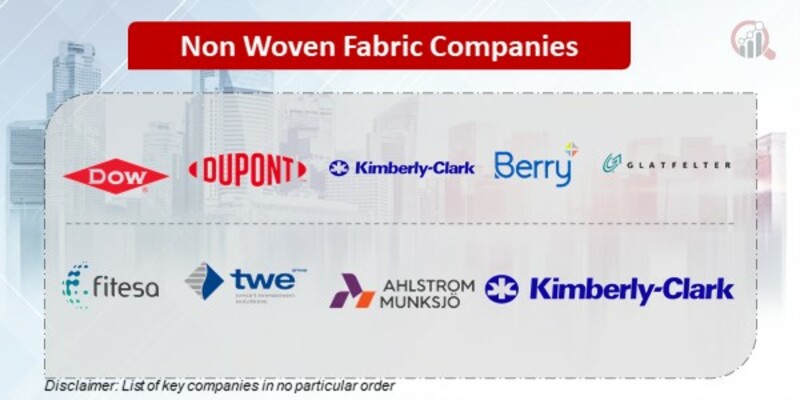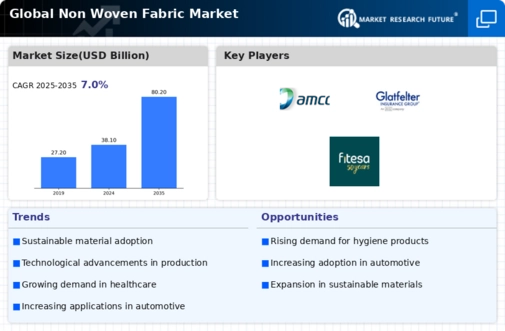Top Industry Leaders in the Nonwoven Fabrics Market

Nonwoven Fabrics Market
September 2023- Kolon Industries, a leading South Korean chemical and textile business, said that its two spun-bond nonwoven fabric products, Finon Eco and Finon, were marked by the global specification for a first within the industry in Korea, Environmental Product Declaration (EPD). The firm cleared it also has been rewarded with certifications from two European certification bodies — the EPD International AB in Sweden and the DP Norge in Norway. The EPD system offers a meticulous evaluation of a product's environmental effect.
October 2023- Fiberweb (India) Limited informed in the exchange filing that the company had bagged an export order worth Rs 109 million from the USA. This is the second order of the season and covers both PP Spun Bond and Melt Blown Fabrics. The company has been able to break through in the competitive US market due to its continuous research and development work on products and innovative converted products. The company is a pioneer in the field of Spun Bond Nonwoven Fabric (Technical Textile) and its various converted products. It is also a 100% EOU, the largest exporter, and a Star Export House. The company has established its name as a quality supplier in the international market and is ISO 9001: 2015; ISO 14001:2015; ISO 45001:2018 certified. The Melt Blown Line has been in operation since January 2018, and the company's products are very well accepted in the market.
The Non woven fabric market major player such as Dow, DuPont, KCWW, Berry Inc., Glatfelter, Fitesa, WE GmbH & Co. KG, Ahlstrom-Munksjö, Kimberly-Clark Corporation, Chevron Corporation, Polymer, Group Incorporation, Asahi Kasei Corporation, Fibertex and others










